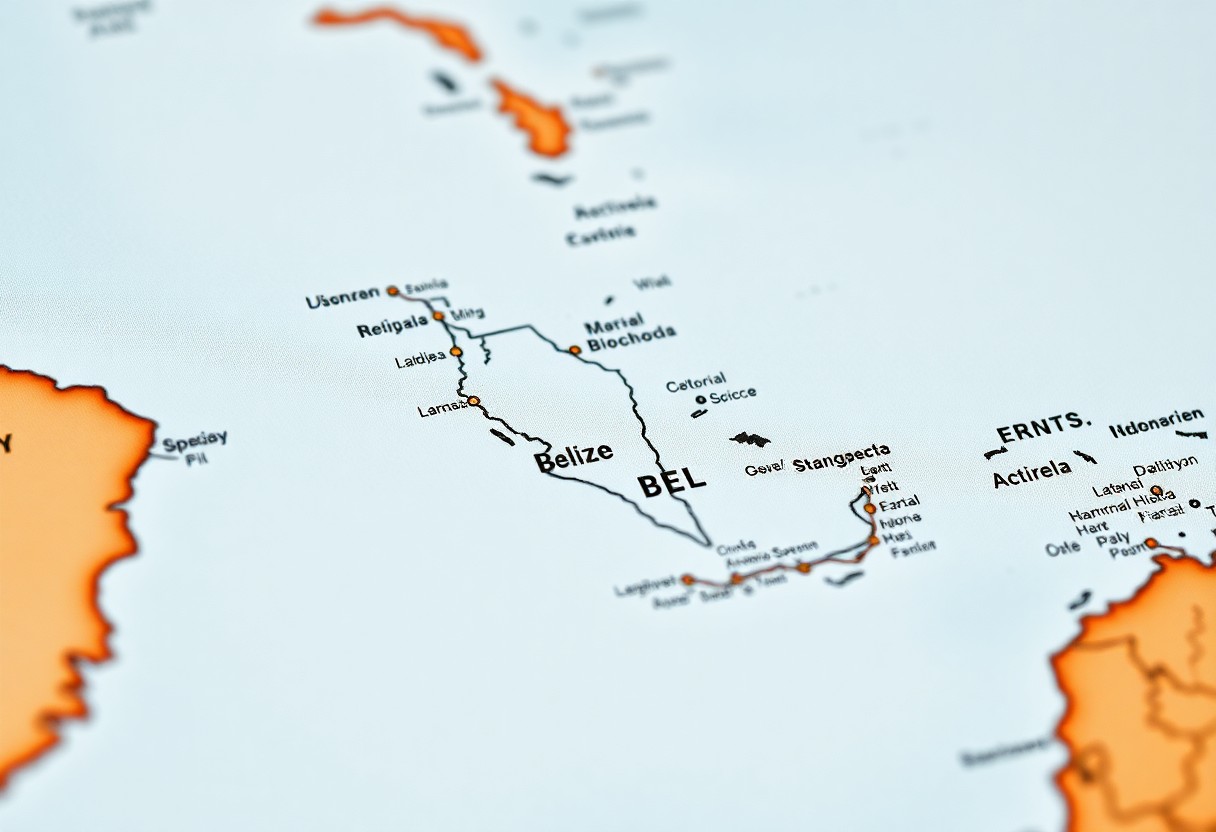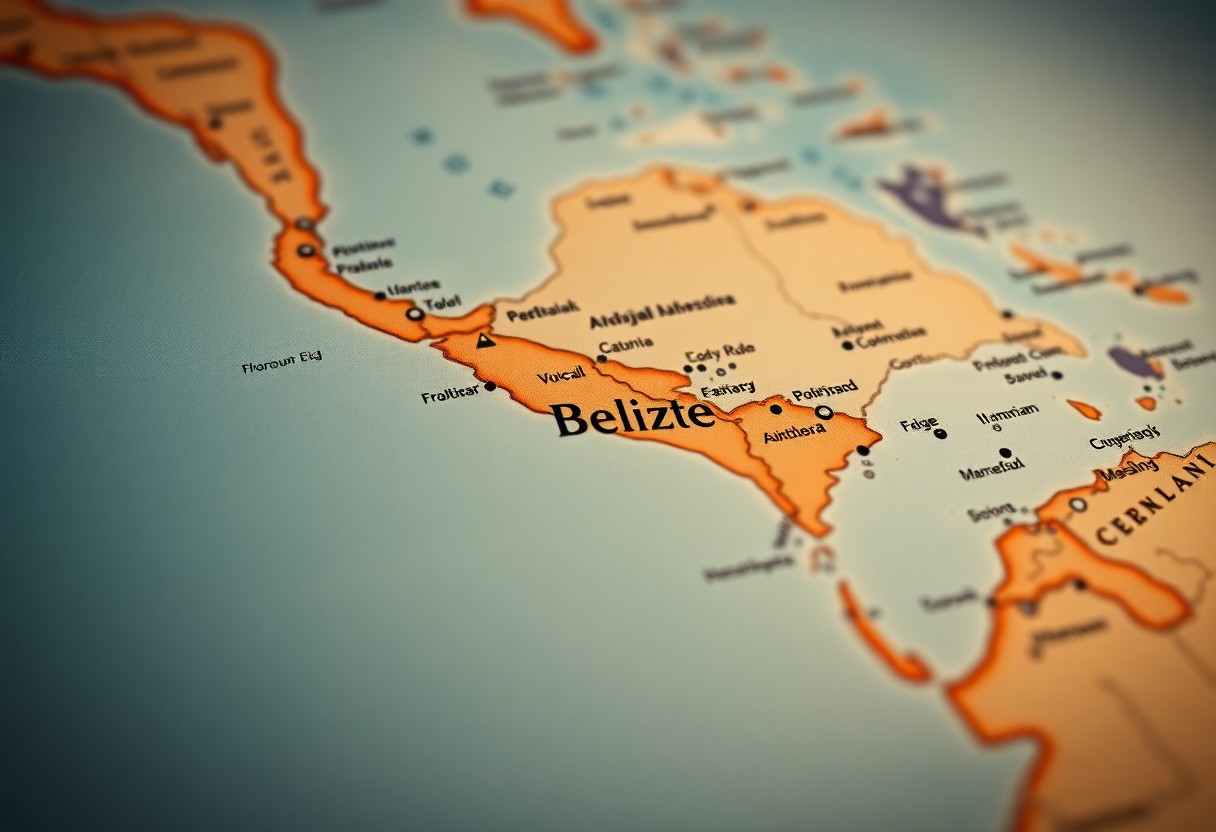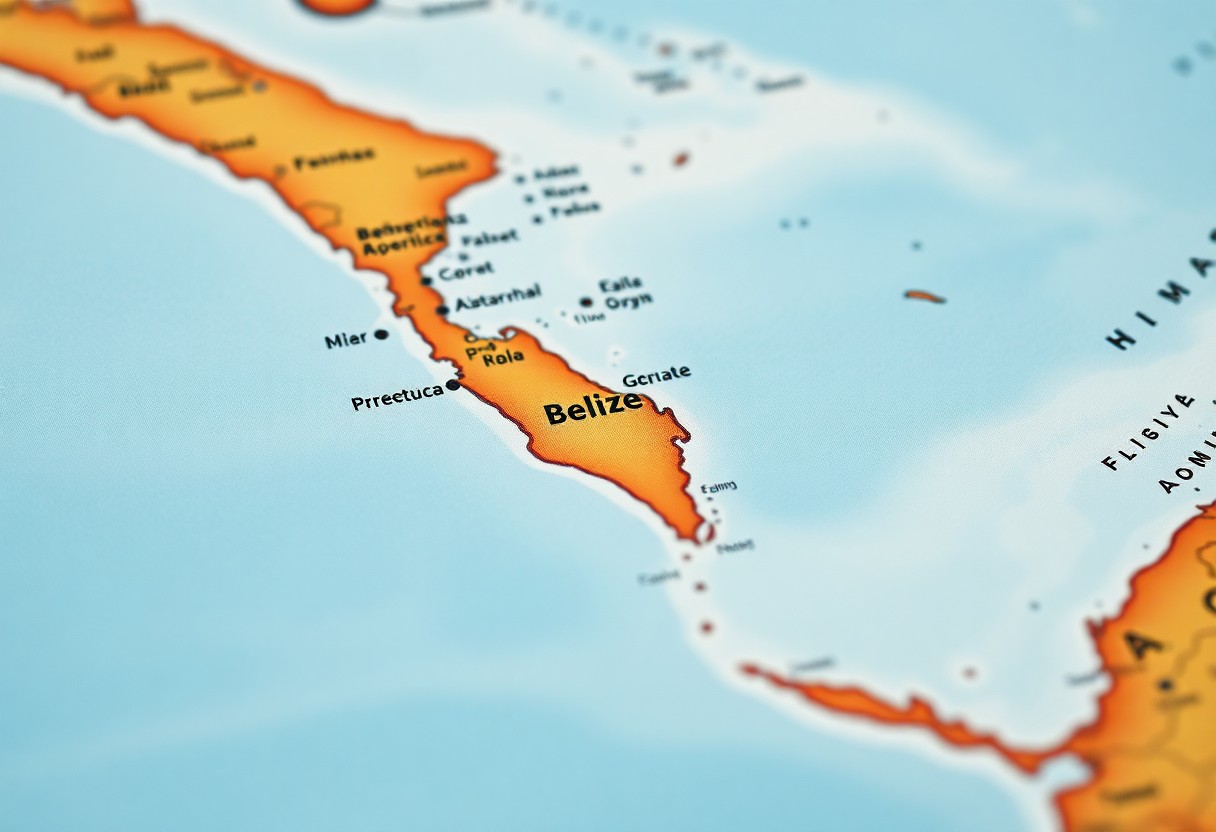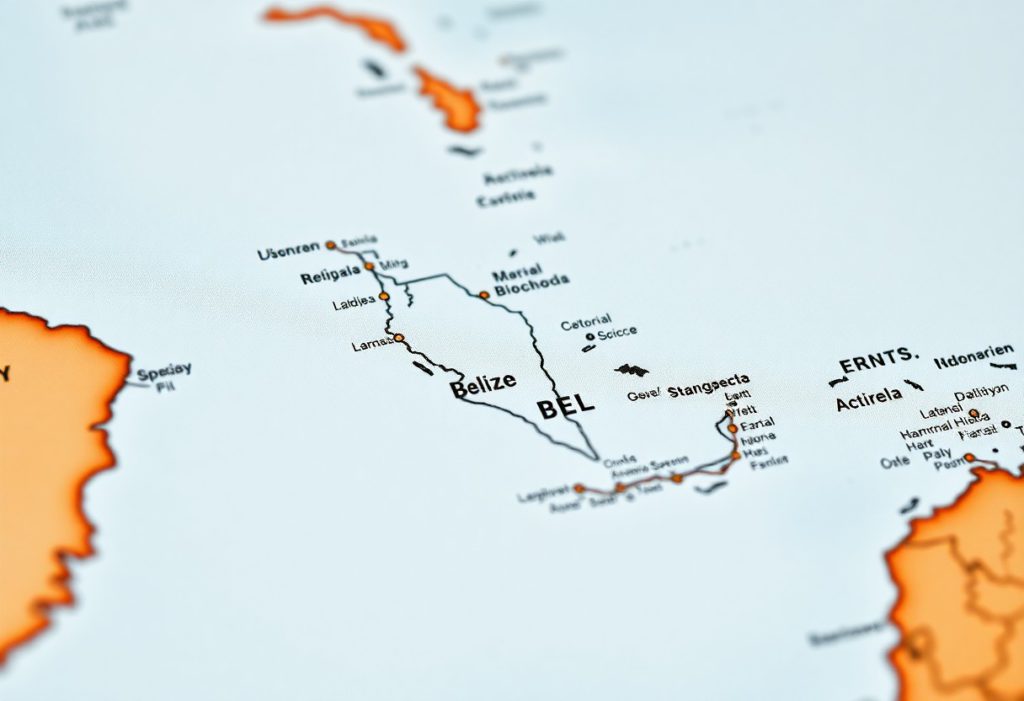Many people often find themselves pondering a geographical mystery: what is the true location of Belize? While some may hastily categorize it as part of a specific continent, the reality is much more complex and fascinating. Belize is situated in Central America, yet it is officially considered part of the North American continent. This vibrant tropical nation is cleverly nestled between Mexico to the north and Guatemala to the south and west, with a stunning coastline along the Caribbean Sea. Understanding Belize's global positioning provides a richer appreciation of its strategic and captivating location within the world's geographical narrative.
 Here’s the text for your blog post:
Here’s the text for your blog post:
Exploring the Unique Geographic Location of Belize
The geographic position of Belize may come as a surprise to many, as it is technically located in North America, yet is often associated with Central America due to its rich cultural and regional attributes. This small yet significant country occupies a unique niche on the continent, blending Caribbean and Latin American influences that make its location exceptionally noteworthy. This cultural fusion not only enhances the allure of Belize but also plays a vital role in shaping the nation's identity and attracting visitors from around the globe.
Examining Belize's Strategic Geographic Position
Located just above the equator on Central America's eastern coast, Belize enjoys a strategically advantageous location nestled between Mexico to the north and Guatemala to the west and south. Spanning approximately 22,970 square kilometers, Belize is recognized as the second smallest country in Central America, featuring a breathtaking coastline that gracefully extends along the Caribbean Sea. This geographical expanse boasts a variety of landscapes and ecosystems, significantly enriching the nation's natural heritage and providing ample opportunities for adventure and exploration.
Understanding Border Dynamics with Neighboring Countries
Belize's borders are intricately defined by its neighboring countries, with Mexico marking its northern boundary and Guatemala outlining its western and southern limits. These borders stretch approximately 250 kilometers alongside Mexico and around 266 kilometers with Guatemala, forming a rich tapestry of historical and cultural connections between Belize and its neighbors. The border regions are often home to diverse ethnic communities, where shared histories and cultural exchanges have thrived, despite any past tensions.
In contemporary times, these border areas have evolved into vibrant hubs of cultural exchange and economic interaction, showcasing the rich multiculturalism that Belize proudly embodies. This dynamic environment creates a unique atmosphere for both residents and visitors, allowing for a deeper understanding of the region's cultural diversity.
Diving Deep into Belize's Caribbean Cultural Connections
Exploring Belize’s geographical and cultural landscape unveils its profound ties to the Caribbean region. Despite its physical placement in Central America, Belize maintains strong cultural, historical, and linguistic connections with its Caribbean neighbors. The country’s British colonial heritage, combined with its English-speaking population, aligns it more closely with Caribbean nations than with its Central American counterparts, enriching its unique cultural identity and appeal.
Celebrating Coastal Identity and Rich Marine Life
To fully grasp Belize’s Caribbean essence, one must delve into its stunning coastline along the Caribbean Sea. This picturesque region is home to vibrant marine ecosystems, breathtaking coral reefs, and a maritime culture that embodies the quintessential Caribbean lifestyle. The coastal areas of Belize offer a remarkable blend of natural beauty and cultural diversity, showcasing the true essence of a Caribbean character that captivates visitors and locals alike.
Belize's Active Participation in CARICOM
At the heart of Belize’s Caribbean connections lies its membership in the Caribbean Community (CARICOM). This strategic partnership not only provides valuable economic, diplomatic, and cultural opportunities but also strengthens Belize’s regional identity and collaborative potential within the Caribbean. Belize’s active engagement in CARICOM transcends mere membership; it symbolizes a commitment to regional integration that fosters significant advantages for all member nations.
This regional collaboration empowers Belize to engage in trade negotiations, acquire diplomatic support, and facilitate cultural exchanges. By leveraging collective strengths, Belize enhances its international standing and elevates its contributions to Caribbean nations, creating a robust platform for mutual growth, development, and interdependence.
Debunking Common Misunderstandings About Belize's Geography
Many travelers and geography enthusiasts often hold misconceptions regarding Belize’s geographic classification, which can lead to confusion. You may wonder how this small nation fits into the larger continental framework, especially considering its unique position at the intersection of Central America and the Caribbean region.
Clarifying Geographic Misunderstandings
A prevalent misunderstanding is the assumption that Belize can be neatly categorized within a single geographic classification. Its intricate location challenges traditional continental boundaries, as it occupies a fascinating crossroads that defies oversimplified categorization. Gaining clarity about Belize’s geographic position reveals a more intricate and layered narrative than many initially perceive, enhancing our understanding of this unique nation.
Discovering Belize's Distinct Cultural Identity
Given its close proximity to Mexico and Guatemala, it is easy to conflate Belize’s geographic identity with that of its neighboring countries. However, Belize’s unique cultural and linguistic characteristics, highlighted in various aspects, distinctly differentiate it within the Central American landscape. Belize is not merely a geographical curiosity; its strategic position serves as a bridge connecting North and Central America, making it a fascinating area of study in geographic complexity.
Belize’s location has a profound influence on its culture, history, and international relationships, creating a rich tapestry of geographic and cultural significance that exceeds simple continental classification and enriches the narrative of its identity.

Unlocking Travel Opportunities Stemming from Belize's Unique Geography
Contrary to the assumptions of many travelers, Belize’s distinctive geographical position offers remarkable travel opportunities that span multiple regions. Its location at the crossroads of North and Central America presents diverse and accessible travel experiences. This advantageous positioning allows for seamless exploration of neighboring countries, providing a gateway to both Caribbean and Central American cultures, thereby enriching any travel itinerary.
Convenient Accessibility for North American Travelers
Situated just south of the United States, Belize offers convenient and relatively short travel distances for those journeying from North America. Expect direct flights from major cities that typically range between 2-4 hours, making it an appealing tropical getaway. Depending on your departure location, particularly from southern U.S. cities, you may discover even more efficient routes to this beautiful destination, enhancing its allure as a travel hotspot.
Exploring a Variety of Travel Options: Flights and Cruises
Among the most popular means of reaching Belize are international flights and cruise ship arrivals. Numerous airlines offer direct connections from major North American hubs, including renowned carriers such as United, American, and Delta, ensuring regular access to Belize City’s Philip S. W. Goldson International Airport. This variety of travel options caters to diverse preferences and needs, making it easier for travelers to experience the beauty of Belize.
Furthermore, your travel choices extend beyond conventional flights. Cruise ships frequently dock at Belize City’s port, providing an alternative maritime route to discover the country. Various cruise lines feature Belize on their itineraries, allowing travelers the chance to explore coastal regions and partake in organized shore excursions. These cruises offer an enchanting glimpse into Belize’s stunning Caribbean coastline and its rich cultural diversity, making them a desirable option for those seeking a leisurely travel experience.
Here’s the text for your blog post sections:
Unveiling Belize's Cultural Landscape
Belize showcases a captivating cultural landscape that defies simplistic categorization. You will encounter a rich tapestry of influences, blending Caribbean, Central American, and indigenous traditions into a unique national identity. The country’s multiethnic heritage distinctly shapes its social fabric, with diverse groups such as Creole, Garifuna, Maya, and Mestizo populations contributing to its vibrant cultural mosaic.
The Impact of Geography on Belize's Cultural Development
Belize’s geographic position at the intersection of the Caribbean Sea and the Central American mainland profoundly influences its cultural evolution. You will observe how coastal landscapes and tropical environments shape traditional practices, economic activities, and social interactions. The maritime traditions and adaptations to agriculture reflect the unique geographical positioning of Belize, showcasing the intricate link between geography and culture.
Diverse Demographics and Cultural Heritage of Belize
One of the most striking features of Belize is its remarkably diverse population. The demographic composition reveals multiple ethnic groups, each contributing their distinctive cultural elements to the national identity. This rich tapestry mirrors historical migrations, colonial interactions, and indigenous roots, resulting in a complex cultural landscape that is both unique and inviting.
Additionally, Belize’s intricate social dynamics are notable. Approximately 50% of the population is mestizo, complemented by significant Creole, Maya, and Garifuna communities. Despite a relatively modest population of around 400,000, Belize represents an extraordinary blend of linguistic and cultural diversity. English serves as the official language, facilitating communication among various ethnic groups and fostering a sense of unifying national identity.
 Here’s the text for your blog post sections:
Here’s the text for your blog post sections:
Analyzing the Economic Overview of Belize
Belize’s economy is a reflection of its unique geographical positioning, manifesting in various sectors. As a small nation with stunning Caribbean coastlines, it boasts an economic structure that is both diverse and adaptable. The country leverages its strategic location to develop key sectors such as tourism, agriculture, and offshore services, establishing a resilient economic framework that harmonizes traditional industries with modern opportunities and challenges.
Exploring Trade Relations and Economic Ties with Neighboring Countries
Within the context of regional dynamics, Belize maintains crucial trade connections with its neighboring nations. Strong economic ties with Mexico and Guatemala are supported by bilateral agreements, promoting cross-border commerce and economic collaboration. Understanding these relationships is vital for grasping Belize’s economic interdependence and regional strategies, highlighting the importance of cooperation in fostering sustainable growth and development.
Geographical Influences on Belize's Industries
Belize’s geography has a significant impact on its industrial development. You will notice how coastal regions drive maritime industries, while inland areas support agriculture and forestry sectors. The diverse terrain provides unique economic opportunities that shape the nation's productive capabilities and industrial landscape, creating a multifaceted economic environment.
The geographical diversity also nurtures a variety of industries. The coastal ecosystems support fishing and marine-related industries, while tropical forests sustain sustainable timber and agricultural production. Furthermore, the potential risks of climate change also influence industrial strategies, encouraging sectors to adopt resilient and adaptive economic models in response to environmental challenges.
Here’s the paragraph:
Gaining Insights into Belize's Geographic Identity
Ultimately, it may be intriguing to discover that Belize occupies a unique geographical position, nestled in Central America, which is officially classified as part of the North American continent. Understanding Belize’s global positioning reveals its strategic role as a bridge between the North and South American regions. As you explore this remarkable country, you will gain insight into its complex continental identity, positioned on the southeastern edge of the North American landmass and adjacent to the Caribbean Sea. This geographical nuance makes Belize a distinctive destination that defies simple continental categorization, offering an enriching blend of cultural and geographical diversity that captivates travelers.
Here’s a detailed FAQ about Belize’s geographical position:
Frequently Asked Questions About Belize's Geography
Q: Is Belize located in North America or Central America?
A: Belize is geographically situated in Central America, which is technically part of North America. The country is located on the northeastern coast of Central America, sharing borders with Mexico to the north and Guatemala to the west and south. While some geographers consider Central America a distinct subcontinent, it is officially recognized as part of the North American continent, illustrating its unique geographical position.
Q: What are Belize’s geographical coordinates and unique regional characteristics?
A: Belize is positioned between approximately 15.8° and 18.5° north latitude and 87.5° and 89.2° west longitude. The country features a diverse landscape that includes tropical rainforests, coastal plains, and a coastline along the Caribbean Sea. Its unique position situates it within the Central American region while maintaining distinct geographical and cultural characteristics that define its identity and allure.
Q: How does Belize’s location influence its cultural and historical development?
A: Belize’s geographical position has profoundly shaped its cultural diversity and historical development. Acting as a bridge between North and South America, it has been influenced by the Mayan civilization, European colonization, and Caribbean elements. Its location has facilitated trade, migration, and cultural exchanges, resulting in a rich, multicultural society that embraces Creole, Garifuna, Maya, and mestizo populations, creating a vibrant and diverse cultural tapestry.
The Article Which Continent Is Belize On? Understanding Its Global Position appeared first on Belize Travel Guide
The Article Belize’s Global Position: Which Continent Is It On? Was Found On https://limitsofstrategy.com



Your examination of Belize’s geographical nuances is indeed thought-provoking. The dichotomy between its classification as part of North America and its cultural association with Central America raises critical questions about how we understand geography in a broader context. It makes me reflect on the complexities of identity and region that many nations face.
It’s intriguing how the geographic classification of Belize really highlights the complexity of cultural and regional identities. Growing up, I always associated Central America with a specific cluster of countries, so discovering that Belize is politically aligned with North America was quite the revelation! This duality adds layers to its already rich tapestry of cultures and influences, shaped by its Maya heritage, British colonial past, and vibrant Creole communities.
You make such an excellent point about the complexities of Belize’s identity. For many, especially in the U.S. or Canada, the geographical and political boundaries can sometimes feel a bit rigid, but cultures rarely fit neatly into predefined boxes. Belize’s unique blend of indigenous Maya heritage, British colonial history, and Creole influences definitely adds to its richness.
You’ve captured the essence of Belize’s identity so well. It really is fascinating how cultural influences meld together in a place like Belize, creating something that defies easy categorization. I often find myself reflecting on how identity can be as fluid as the rivers that flow through the country. The interplay of the Maya heritage with colonial histories and the Creole culture really reflects a broader theme about how history shapes the present in complex ways.